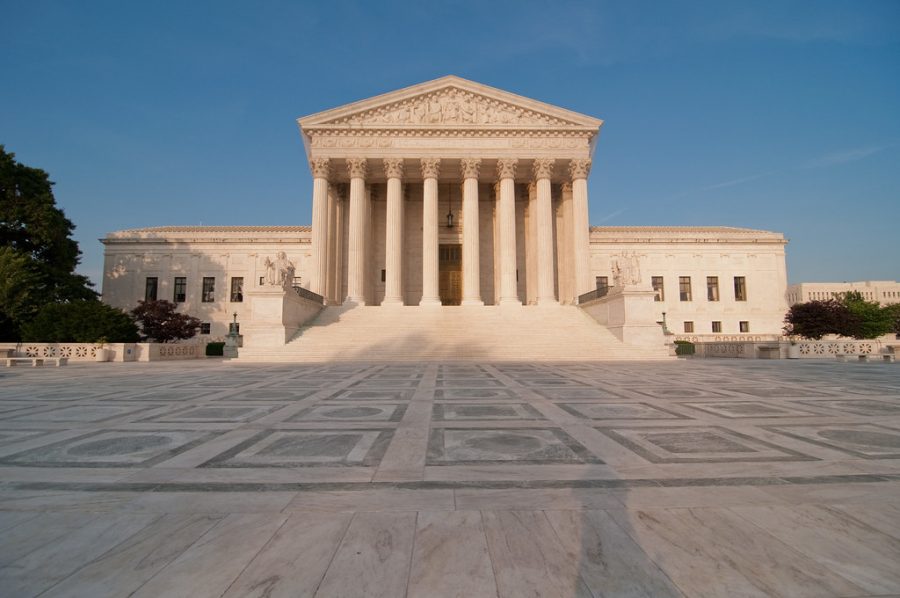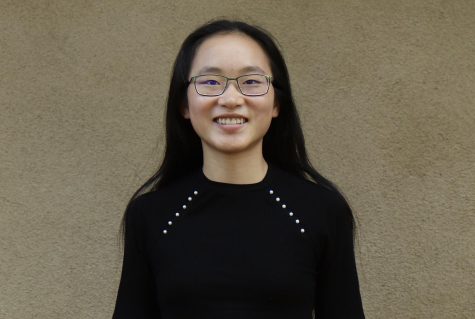A history of anti-Asian court cases in the U.S.
Photo by Mark Fischer, licensed under Creative Commons
The U.S. Supreme Court has made many important decisions concerning Asian Americans, especially concerning their immigration to the U.S.
April 21, 2021
Although the recent rise in violence against Asian Americans during the coronavirus pandemic has brought widespread attention to anti-Asian discrimination, Asian Americans have long been the targets of racism in the U.S., including through the law. Important court cases have historically denied Asian Americans their rights, yet some granted or defended their rights.
1854 People v. Hall
The California Supreme Court set precedent that Chinese people had no right to testify in court cases against whites, which allowed perpetrators to get away more easily with violence against Chinese people. Three Chinese people had testified in the murder of Ling Sing by George Hall, but Hall won the appeal and was freed when the court’s ruling in the appeal case banned testimony of Chinese people, in accordance to the laws that disallowed testimony by Black, Indigenous and mixed-race people against white people.
1885 Tape v. Hurley
Joseph and Mary Tape attempted to enroll their daughter, Mamie, in a public elementary school in San Francisco. After she was denied enrollment, the Tapes sued the school district and won their case. The California Supreme Court determined that according to the California Political Code, public schools could not deny children of Chinese descent their education. However, shortly after the ruling, the California amended school laws to create segregated schools for non-white children. This is similar to the Plessy v. Ferguson case in 1896, which justified segregated facilities on the basis that they were separate but equal.
1889 Chae Chan Ping v. United States
Chae Chan Ping was denied entry in the U.S., despite possessing a re-entry permit as required under the Chinese Exclusion Act, because of the newly passed Scott Act in 1888. The Scott Act denied re-entry to Chinese immigrants if they would be not eligible to enter for the first time, which included all laborers. One of Ping’s main challenges was that the Scott Act went against the Burlingame Treaty signed between China and the U.S. that established friendly relations and encouraged immigration, but the Burlingame Treaty was revised in 1880 to stop immigration from China. The Court upheld the power of the U.S. government to pass legislation overriding previous treaties. The decision established precedent for the Supreme Court’s limited role in immigration to the U.S., in which it would defer to Congress’ decisions to regulate immigration.
1898 United States v. Wong Kim Ark
The case established birthright citizenship based on location through its interpretation of the Fourteenth Amendment, and stated that anyone born in the U.S., excluding those born to diplomats, would be granted U.S. citizenship, regardless of the standing of their parents. Wong Kim Ark was denied entry into the U.S. on the basis of the Chinese Exclusion Act and laws prohibiting naturalization of Chinese people. As Wong was born in the U.S., he sued the government to recognize his citizenship. The U.S. Supreme Court reaffirmed his claim to citizenship, and since his citizenship was constitutionally protected, the Chinese Exclusion Act and other congressional acts did not apply and cannot override the Constitution.
1922 Takao Ozawa v. United States
Takao Ozawa was denied naturalization as an U.S. citizen, because the U.S. Supreme Court did not consider him to belong to “free white persons,” who are eligible for naturalization. The Court claimed that a white person was someone of Caucasian descent, so Japanese people were not included.
1923 United States v. Bhagat Singh Thind
The U.S. Supreme Court determined that Bhagat Singh Thind, a man of Indian descent, could not be naturalized as a citizen of the U.S., despite his claims of Aryan identification. The Naturalization Act of 1906, which built upon previous immigration acts, maintained that naturalization only applied to “aliens, being free white persons, and to aliens of African nativity and to persons of African descent.” Thind and his lawyer argued that he was Caucasian, based on the linguistic ties between Indo-Aryan and European languages and certain scientific sources classifying Aryans as Caucasians. The Court claimed that “white persons,” as specified in the naturalization laws, meant white in the “common understanding,” and that did not include Thind. People of Indian descent could not be naturalized as citizens, and some naturalized Indian Americans had their citizenship revoked after the ruling.
1944 Korematsu v. United States
Korematsu v. United States upheld the internment of Japanese Americans during World War II. After the attacks on Pearl Harbor, President Franklin Roosevelt signed Executive Order 9066, which established portions of the West Coast as a military exclusion zone. This meant that the military could order the internment of Japanese Americans. Fred Korematsu refused to move, arguing that the order violated his 14th Amendment rights. However, the U.S. Supreme Court ruled against him, stating that the military’s need to move Japanese Americans for national security reasons superseded his civil rights. Dissenting justices criticized the decision as motivated by racial discrimination.
1974 Lau v. Nichols
After San Francisco schools desegregated in 1971, Chinese students were integrated back into public schools, but many were not fluent in English. They were not provided supplemental English instruction and were forced to repeat grades or attend special education classes. Edward Steinman helped the parents of Kinney Kinmon Lau file a class action suit against Alan Nichols, the president of the school district, arguing that the students had a right to receive additional help under the Fourteenth Amendment and Civil Rights Act of 1964. The U.S. Supreme Court ruled in favor of Lau, deciding that the lack of supplemental bilingual education violated Title VI of the Civil Rights Act of 1964, because the students were denied a meaningful education without those resources.


































































